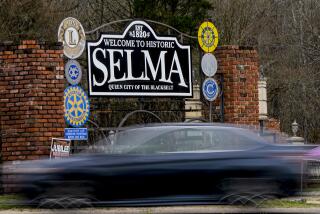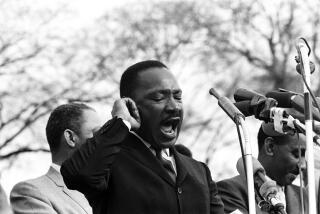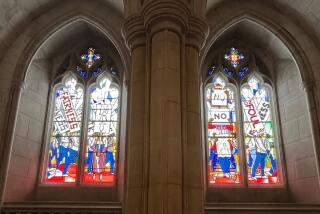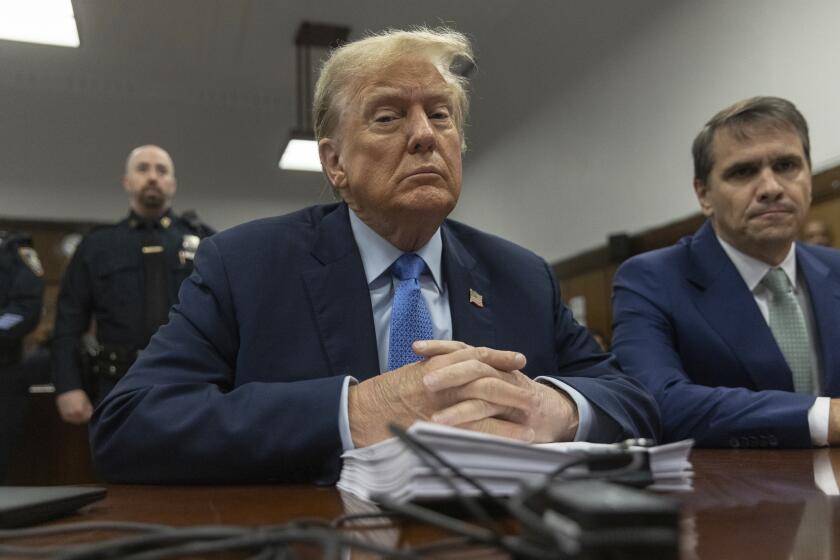Modern civil rights movement expands on classic methods
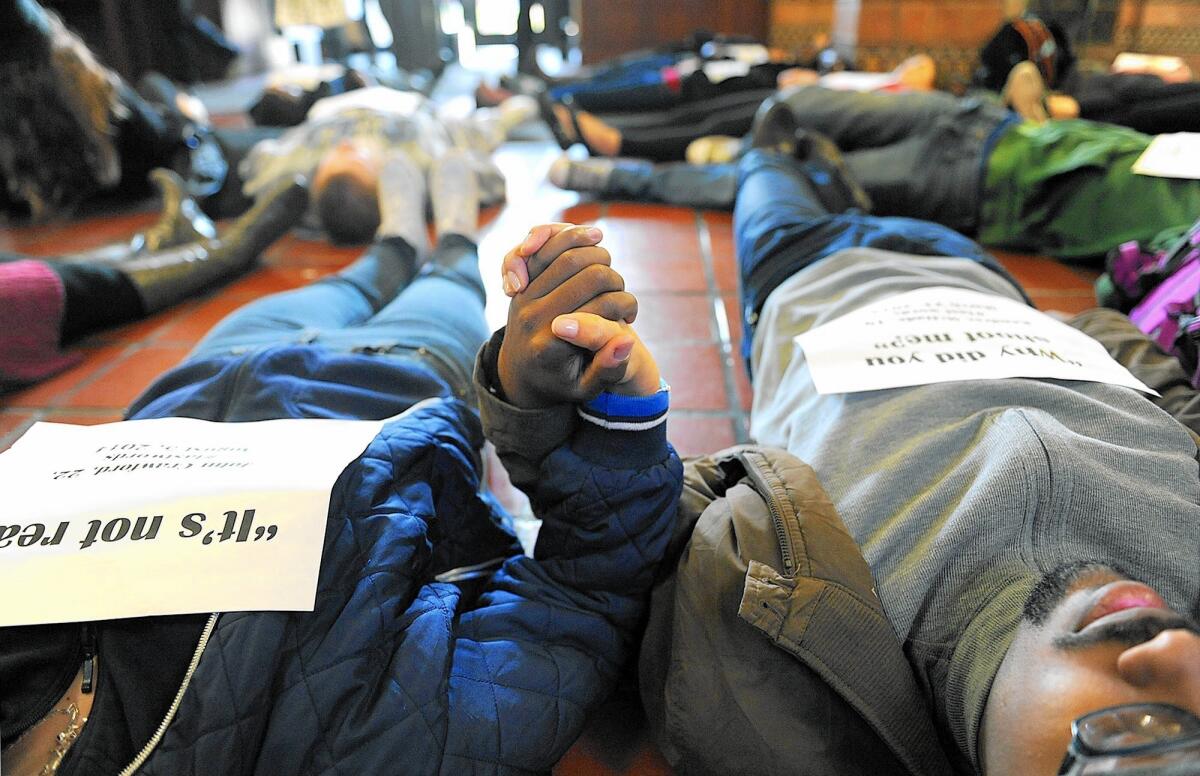
As black Americans erupted in protest across the country last year, the St. Louis rapper Tef Poe told fellow activists: “This ain’t your grandparents’ civil rights movement.”
That’s true. Today’s movement is a complex machine whose work extends far beyond the protests in Ferguson, Mo., and its methods are at once modern and classic. The movement includes longtime organizations such as the National Assn. for the Advancement of Colored People and the American Civil Liberties Union, as well as millennials who had never protested before last fall.
------------
FOR THE RECORD:
Civil rights leaders: In the March 6 Section A, an article about a new generation of civil rights leaders misquoted Selma activist DeRay Mckesson as saying, “Protest isn’t always confrontation; protest isn’t always physical.” What Mckesson said was, “Protest is always confrontation; protest isn’t always physical.”
------------
Their weapons are demonstrations and lawsuits, but spreadsheets too; their battles are fought on sidewalks, in courtrooms and over social media. While their tone is occasionally harsher than Martin Luther King Jr.’s, they also espouse nonviolence.
Most of all, they share a common goal with their ancestors to improve the lives of black Americans. But the racial inequalities they face are harder to illustrate, and perhaps more complicated to fix, than ever.
“At the heart of any revolution is a well-told story, right?” said DeRay Mckesson, 29, one of the most prominent protesters to emerge from the unrest after a white Ferguson police officer fatally shot black 18-year-old Michael Brown in August. “We are trying to tell the story of what is happening to black people in America.... We believe the truth is so damning that we just need to tell it and find different ways to tell it.”
This weekend, the president and others will mark the 50th anniversary of “Bloody Sunday” in Selma, Ala., where police tear-gassed and assaulted black men and women who were marching for the right to vote.
Much of the power of the event came from brutal imagery of white supremacy in the South. Photos of white policemen beating peaceful demonstrators with nightsticks did not need much explanation. The Voting Rights Act was enacted not long after.
But one struggle against racial inequality has been replaced by another, with problems harder to photograph than white mobs waving the Confederate flag.
A hundred and fifty years after the end of slavery, black families remain on average 13 times poorer than their white counterparts. School segregation and housing discrimination have been illegal for decades, yet many black Americans live in poorer school districts and neighborhoods that remain informally segregated.
The police killings that prompted recent protests recall racial unrest in northern cities and in Watts in the 1960s, when entrenched segregation and poverty were also pervasive, said Patricia Sullivan, professor of history at University of South Carolina.
The Civil Rights Act addressed voting rights, and the Supreme Court’s earlier Brown vs. Board of Education decision did away with “separate but equal.” But a law, Sullivan said, “can’t just change” problems such as poverty.
These days some activists and advocates have turned social media, scholarship and data analysis into powerful tools for highlighting the problems faced by modern black Americans.
“Protest is always confrontation; protest isn’t always physical,” said Mckesson, who has more than 67,000 Twitter followers. With activist Johnetta Elzie, he helps run a newsletter that reaches thousands of readers. “How do we create infrastructure that supports the movement?” he asked. “Part of that infrastructure is making sure that people have the knowledge and information to act.”
Inspired by a Twitter conversation he had with Mckesson — whom he still hasn’t met — Samuel Sinyangwe, 24, of San Francisco embarked on a project to compile and publish data on fatal police shootings in the U.S.
Such shootings have not been fully tracked by the federal government. Sinyangwe’s project, Mapping Police Violence, found that at least 56 unarmed black people had been killed by police in 2014 — more than all other races combined, according to his research.
“I had tools they never had access to,” Sinyangwe says of 20th century civil rights activists, citing the data and mapping programs he used to create the project.
Sinyangwe said he harnessed Mckesson’s Twitter following and newsletter to spread the message to thousands and to attract the attention of mainstream reporters. He noted that the software he used was free, so others could follow in his footsteps.
Other statistical work — combined with traditional scholarship and research — has played a prominent role in providing civil rights advocates with intellectual ammunition and evocative metaphors.
Civil rights attorney Michelle Alexander’s study of modern incarceration led her to conclude that prison had become “The New Jim Crow” for black Americans. Her 2010 book of the same name has become a key point of reference for contemporary civil rights activists and advocates who have pushed for increasing scrutiny of the prison system in recent years.
When musician John Legend accepted an Oscar in February, he told a global audience, “There are more black men under correctional control today” — meaning prison, probation and parole — “than were under slavery in 1850.” That fact is drawn from Alexander’s book.
Similarly armed with statistics and scholarship, writer Ta-Nehisi Coates wrote a 16,000-word cover story for the Atlantic that traced the roots of current black poverty backward in time through housing discrimination, Jim Crow segregation and slavery.
His piece, “The Case for Reparations,” which took two years to report, broke the single-day traffic records for the Atlantic’s website, sent the magazine’s newsstand sales soaring, and went on to win the 2014 George Polk Award for commentary in February.
The civil rights movement of the past also had intellectual leaders, of course, and historians add that some of its early grass-roots protests were similar to seemingly spontaneous demonstrations that emerged in Ferguson and across the country last fall.
“No one had to tell people in Montgomery that they had a problem with their buses — they knew that — and that’s a striking parallel between the two,” said Dennis C. Dickerson, the James M. Lawson Jr. professor of history at Vanderbilt University.
The “die-ins” that spread across the country last fall — with activists lying down and playing dead in public and private places — put police shootings on a national map, added Sullivan. “It reminded me of the sit-ins, the freedom rides — but then what? That part’s important. But we’re in the moment now, so it’s hard to see.”
Jeffrey Turner, 19, of Corvallis, Ore., is one of the movement’s new converts. He says he was glued to Twitter as demonstrations unfolded in Ferguson, and for the first time in his life decided to join protests. One came in December at the Oregon state Capitol, where demonstrators staged a die-in.
Turner recalled thinking, “Man, I have to do this; I obviously care about this.” And when the time came, he played dead along with everyone else, to send a message.
Twitter: @mattdpearce
More to Read
Start your day right
Sign up for Essential California for news, features and recommendations from the L.A. Times and beyond in your inbox six days a week.
You may occasionally receive promotional content from the Los Angeles Times.
